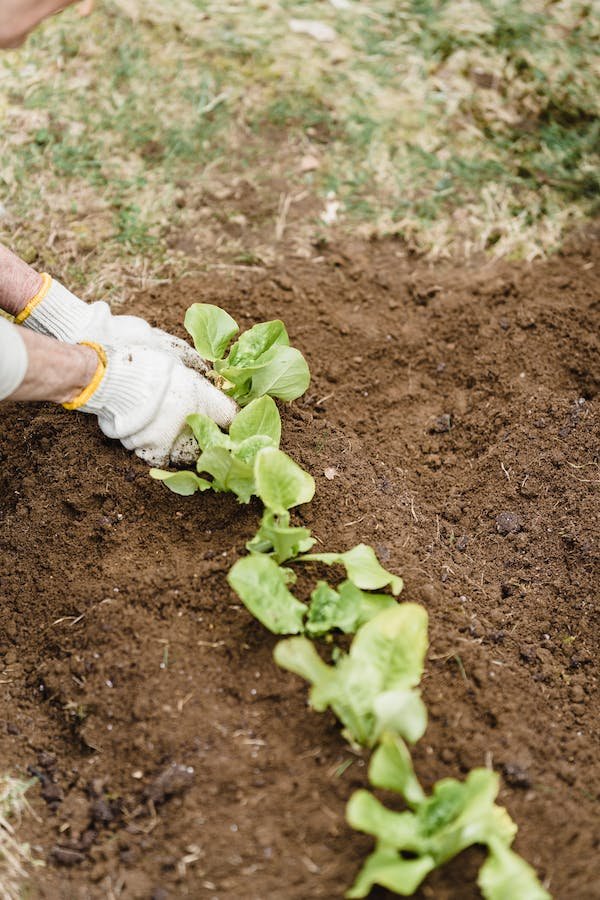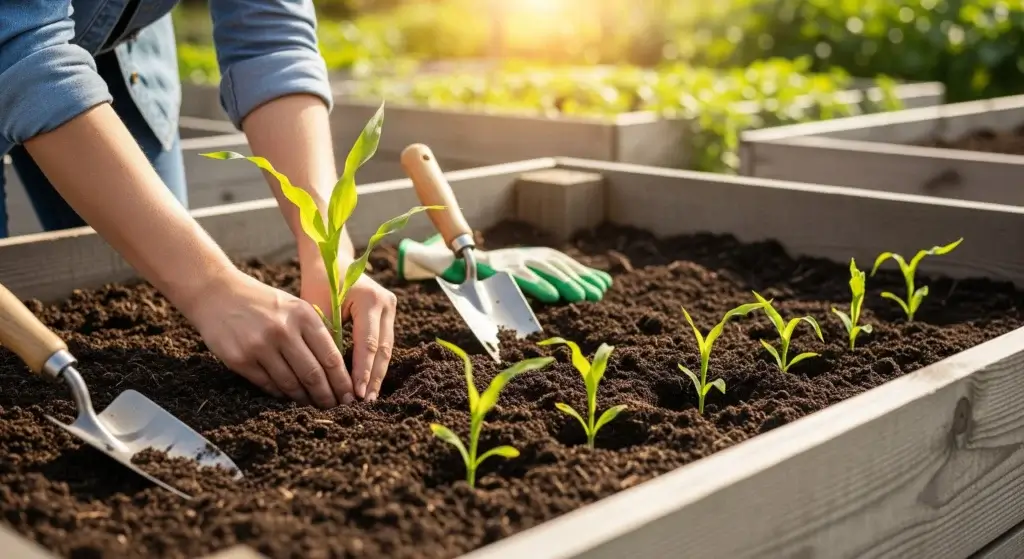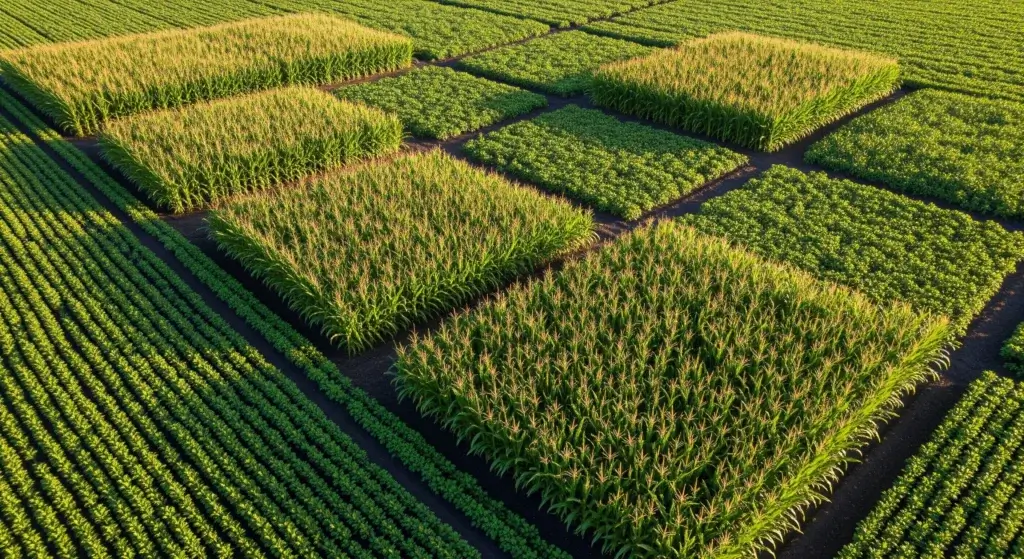
Venturing into the world of gardening demands more than just seeds and sunlight.
To cultivate flourishing plants, it’s crucial to grasp the essential distinctions between potting mix and garden soil.
In this all-encompassing guide, we will delve deep into these soil options, equipping you with the knowledge to make informed decisions for the well-being of your green companions.
What is Garden Soil?
Garden soil, the essential base for any outdoor garden, is a harmonious mixture of mineral particles, organic matter, water, and air.
Functioning as a natural nutrient reservoir, it facilitates plant growth and nurtures a thriving ecosystem beneath the surface.
- Read also: Topsoil vs. Garden Soil: Understanding the Difference
- Read also: How to Use Soil Conditioner
The Components of Garden Soil
- Mineral particles: Sand, silt, and clay contribute to soil texture, affecting water retention and drainage.
- Organic matter: Decomposed plant material, manure, and other organic substances enrich the soil with essential nutrients.
- Water and air: Adequate moisture and air circulation are vital for plant root health and nutrient uptake.

What is Potting Mix?
Potting mix, meticulously crafted for container gardening, is a specialized blend uniquely formulated to create ideal conditions for potted plants.
Distinguished from garden soil by its composition and characteristics, this mix caters to the distinctive requirements of plants thriving in containers.
Ingredients in Potting Mix:
- Peat moss or coconut coir: These components enhance water retention, crucial in the confined space of a pot.
- Perlite or vermiculite: Improves aeration and prevents soil compaction.
- Aged bark or compost: Adds organic matter and nutrients to support plant growth.
Differences Between Garden Soil vs. Potting Mix
| Feature | Potting Mix | Garden Soil |
| Composition | Soilless mixture of organic and inorganic materials |
Natural mixture of topsoil, clay, sand, and organic matter
|
| Texture | Lightweight and fluffy |
Dense and heavy
|
| Drainage | Excellent |
Moderate to good, depending on the composition
|
| Aeration | Excellent |
Moderate to good, depending on the composition
|
| Nutrient Content | Formulated with added nutrients |
Variable may require amendments
|
| Cost | Generally more expensive |
Generally less expensive
|
| Applications | Container gardening, hanging baskets, raised beds, seed-starting |
Planting directly in the ground, flower beds, vegetable gardens, landscaping
|
Which Option is Best for Starting Seeds?
When embarking on the journey of seed starting, potting mix emerges as the optimal choice for several compelling reasons.
Its light texture and sterile composition play pivotal roles in creating an environment that is both clean and conducive to the successful germination of seeds.
- Light texture: The potting mix is engineered with a light and airy texture, providing seeds with an easy-to-navigate environment.
- Sterile composition: Unlike garden soil, potting mix is free from potentially harmful pathogens, weed seeds, and other contaminants that could impede the delicate germination process.
- Moisture retention: The potting mix excels in moisture retention, providing a consistent and controlled level of hydration crucial for seed germination.
- Nutrient accessibility: While potting mix provides a solid foundation for seed germination, it’s important to note that it may lack certain nutrients essential for sustained plant growth.
What Should You Use for Container Gardening?
When diving into the world of container gardening, the go-to choice for a growing medium is potting mix, and for good reason.
This specially formulated blend is crafted to meet the unique requirements of plants thriving in containers, offering a host of benefits that contribute to their health and vitality.
- Lightweight nature: This characteristic is particularly advantageous for container gardening, where the weight of the growing medium can impact the mobility and ease of handling of the containers.
- Excellent drainage: Container plants demand a growing medium that ensures efficient drainage, preventing waterlogged conditions that can be detrimental to their health.
- Added nutrients: Potting mix is not just a substrate; it’s a nutrient-rich foundation for your container garden.
- Versatility: Potting mix is a versatile choice that accommodates a wide range of plants, from flowers and herbs to vegetables and ornamentals.

Which Soil is Better for Making a Raised Bed Vegetable Garden?
When it comes to establishing a raised bed vegetable garden, the choice of soil is pivotal for the success of your crops.
In this context, garden soil emerges as the preferred option, offering a range of characteristics that cater to the specific needs of vegetables thriving in raised beds.
- Natural composition: Garden soil is a product of nature, boasting a natural and diverse composition that serves as an excellent foundation for a variety of crops.
- Nutrient richness: One of the key advantages of using garden soil in raised beds is its inherent nutrient richness.
- Water retention and drainage: Garden soil, with its well-rounded composition, strikes an equilibrium that prevents waterlogging while ensuring adequate moisture for plant roots.
- Microbial activity: Garden soil, being a product of the natural environment, typically harbors a diverse community of microbes.
- Cost-effectiveness: Garden soil is often a cost-effective option for filling raised beds, especially when compared to some specialized mixes.
Can Potting Soil be Used as a Soil Amendment in the Garden?
Certainly, potting soil can play a valuable role as a soil amendment in your garden, offering specific benefits that enhance the overall health and productivity of your plants.
Its contributions to soil structure, water retention, and nutrient enrichment make it a versatile option.
However, thoughtful blending with existing garden soil and consideration for the unique requirements of your plant varieties are essential steps to harness their full potential and promote a flourishing garden environment.
- Read also: How to Lower pH in Soil for a Thriving Garden
- Read also: How to Make Organic Fertilizers at Home
Conclusion
Deciding between potting mix and garden soil is crucial for successful gardening.
Each has unique qualities suited for different purposes.
The potting mix is ideal for starting seeds and container gardening, offering a light texture and excellent drainage.
On the other hand, garden soil is preferable for raised beds, providing natural richness and supporting a diverse range of crops.
Choosing the right soil sets the stage for thriving plants and abundant harvests, making informed decisions tailored to your gardening goals.
FAQs
While garden soil may be used in pots, it tends to be dense and may not provide adequate drainage. Using a well-draining potting mix is generally recommended for container gardening.
Potting mixes often come with added nutrients, but for long-term container plant health, occasional fertilization is beneficial, especially for plants with high nutrient requirements.
Garden soil may not be suitable for indoor plants due to its density and the potential for pests. A lightweight, well-draining potting mix is a better choice for indoor container plants.



